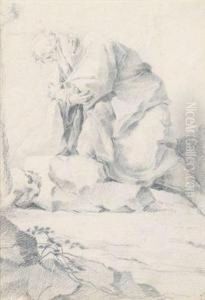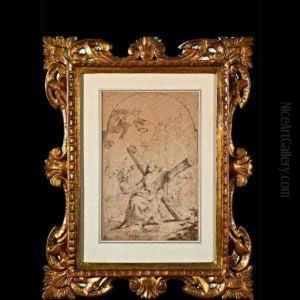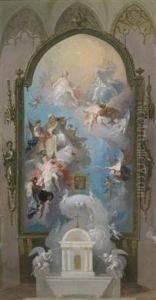Josef Winterhalder Paintings
Josef Winterhalder the Elder was a prominent Bohemian painter, born on August 20, 1743, in the small town of Vöhrenbach, now in Germany. He was a member of the Winterhalder family, which was noted for its significant artistic contributions during the 18th and 19th centuries. Although the family originated from the Black Forest region, they eventually spread throughout Europe, with several members becoming well-known artists in their own rights.
Josef Winterhalder the Elder is particularly known for his work in the Rococo style, which was prevalent in Europe during the mid-18th century. He was active during a period that saw the transition from Rococo to the Neoclassical style. Winterhalder's body of work mainly comprised religious paintings, portraits, and frescos. He was skilled in capturing the delicate and ornamental elements of the Rococo aesthetic, often characterized by graceful figures, pastel colors, and light, decorative forms.
In terms of his career, Winterhalder became an influential figure in the Habsburg territories, where he worked on various commissions for churches and noble residences. His work was appreciated for its elegance and attention to detail, and he was instrumental in spreading the Rococo style in Central Europe. Despite the prominence of his work during his lifetime, Josef Winterhalder the Elder is not as widely recognized today as some of his contemporaries.
Winterhalder's influence extended beyond his own works; he was also a teacher to his children, who continued the family tradition of painting. His legacy is thus not only in his paintings but also in the continuation of artistic skill and style through his descendants. Josef Winterhalder the Elder passed away on June 5, 1807, in the town of Heitersheim. Even though he is not as celebrated today as some other artists of his era, his contributions to the Rococo style and his role in the artistic heritage of the Winterhalder family ensure his place in the annals of art history.


